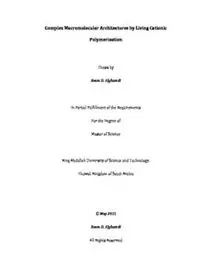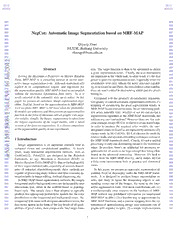
NegCut: Automatic Image Segmentation based on MRF-MAP PDF
Preview NegCut: Automatic Image Segmentation based on MRF-MAP
2012 2012 #2223 #2223 000 054 001 055 002 056 003 NegCut: Automatic Image Segmentation based on MRF-MAP 057 004 058 005 059 006 QiyangZhao 060 007 061 NLSDE, Beihang University 008 062 zhaoqy@buaa.edu.cn 009 063 010 064 0211 065 1 012 066 0 0213 Abstract tion. The targetfunctionis then to be optimizedto obtain 067 0n 14 a good segmentation result. Clearly, the user interactions 068 015 069 a Solving the Maximum a Posteriori on Markov Random areimportantinthewholetask,inotherword,it’sthefirst 0J16 Field, MRF-MAP, is a prevailing method in recent inter- powertopushtheoptimizationtorun. Especiallywhenthe 070 06 17 activeimagesegmentationtools. Althoughmathematically smoothnessterm only reflects the noisy tolerance capabil- 071 0118 072 explicit in its computational targets, and impressive for ity,asinGrabCutandPaint,theuser-definedcolordistribu- 0 19 073 thesegmentationquality,MRF-MAPishardtoaccomplish tionsaremuchcriticalindeterminingwhichpartthepixels 0]20 074 V without the interactive information from users. So it is belongto. 021 075 C rarely adopted in the automatic style up to today. In this Compared with the generally dissatisfactory segmenta- 022 076 . paper, we present an automatic image segmentation algo- tionqualityincurrentautomaticsegmentationmethods,it’s 0s23 077 rithm, NegCut, based on the approximationto MRF-MAP. c tempting of considering the good segmentation results in 024 078 [ FirstweproveMRF-MAPisNP-hardwhentheprobabilis- MRF-MAP-basedinteractivetools. Soaninterestingprob- 0 25 079 02 26 ticmodelsareunknown,andthenpresentanapproximation lem arises naturally here: whether or not we can design a 080 v functionintheformofminimumcutsongraphswithnega- segmentation algorithm in the MRF-MAP framework, but 027 081 5 tiveweights. Finally,thebinarysegmentationistakenfrom withoutanyuserinteractions? Howevertherearefewcon- 028 082 0 the largest eigenvector of the target matrix, with a tuned creteattemptsexceptSE-Cut,tothebestofourknowledge. 0929 versionoftheLanczoseigensolver. Itisshowncompetitive In order to produce the required color models, the user- 083 0230 084 0.31 atthesegmentationqualityinourexperiments. designatedzonesinGrabCutarereplacedbyautomatically 085 1 chosen seeds in SE-Cut([4]). SE-Cut choosesits seeds by 0032 086 randomwalksandspectralembeddingtechniquesinsteadin 0233 1Introduction 087 0134 theMRF-MAPframeworkitself. Clearly,it’snotaunified 088 : processinginonlyonedominatingthreadinthetheoretical 0v35 Image segmentation is an important research field in 089 sense. In practice, there’s an additional but necessary re- 0i36 computer vision and computational graphics. In recent 090 X quirementforallseedsto belargeenoughlestbeingelim- 037 years, many interactive segmentation methods, such as 091 r inated in the advanced processing. However, it’s hard to 0a38 GrabCut([1]), Paint([2]), are designed in the Bayesian 092 derive from the MRF-MAP directly, and it makes SE-Cut 039 framework, to say, Maximum a Posteriori (MAP) on 093 a little more inconvenient both in practice and theoretical 040 MarkovRandomFields(MAP)([3]).Duetothehighquality 094 views. 041 oftheirsegmentationresults,especiallyofaccuratebound- 095 042 aries of extracted objects/foregrounds, these methods are In this paper, we presentan automaticsegmentational- 096 043 capableofprocessingmanytediousandtime-resumingin- gorithm,NegCut,thoroughlyundertheMRF-MAPframe- 097 044 teractivetasksinimageediting,medicaldiagnosing,etc. work. It is designed to produce binary segmentation re- 098 045 InMRF-MAP-basedsegmentationmethods,thesample sults, and likely to figure the dominating objects or out- 099 046 foregroundand/orbackgroundzonesaredesignatedbyuser standing scenes out of the images, the same as the inter- 100 047 interactions first, either in the scribble-based or painting- activesegmentationtools. Ourmaincontributionsare: (1) 101 048 based style. The sample data is then adopted to typically a mathematically strict analysis on the hardness of MRF- 102 049 producetwo appropriateprobabilisticmodelsforthe color MAP without any predefined information (or uninformed 103 050 distributionsintheforegroundandbackgroundzones. Ac- MRF-MAPasabbr.) (2)afeasiblewaytoapproximatethe 104 051 companiedwithsomewell-designedsmoothnessterms,the MRF-MAPfunctions,andaconcisemappingfromtheop- 105 052 datatermsappearintheformofthelog-hoodsofallprob- timizationof approximatingenergyontominimumcutsof 106 053 abilitiesofpixelcolors,thencomposethefinaltargetfunc- graphswithnegativeweights. (3)asimpleimplementation 107 1 2012 2012 #2223 #2223 108 162 with the help of the Lanczos eigensolver([5]), along with already adopted in GrabCut. Also we could add a posis- 109 163 someexperimentsandcorrespondinganalysis. stiveconstanttoallsmoothnesscoefficientstoenhancethe 110 164 local continuity, or reduce the factor λ down to eliminate 111 2Background thedifferencesbetweendifferentcolors. 165 112 166 Afterthecolorprobabilisticmodelsandsmoothnessco- 113 In a MRF-MAP-based interactive segmentation algo- 167 efficientsaredetermined,thereareseveralmethodstomin- 114 rithm, the task is mapped into the minimization of a par- 168 imize the target energy function, such as graph cut, loopy 115 ticulartargetenergyfunctionE,whichisthesumofadata 169 belief propagation (LBP) and iterated conditional mode 116 termED andasmoothnesstermES multipliedbyafactor (ICM)([6]). In the case of binary labels, the graph cut 170 117 λ: 171 methodisshowntobepracticallyefficient:thetargetenergy 118 E =ED+λES (1) functioncouldbemappedintocutsonanundirectedgraph 172 119 where the data term ED is the sum of all data penalty on wheretheglobalminimumsolutioncouldbeobtainedwith 173 120 all pixels according to their labels, the smoothness term the max-flowalgorithmsin the polynomialtime. Here the 174 121 ES isthesumofallpotentialofadjacencyinteractionsbe- datapenaltiesareregardedastheweightsofedgeslinkedto 175 122 tweenallneighboringpixelsofdifferentlabels. Inoursit- thesource/sinknodeinnetworks.Astothecaseofmultiple 176 123 uation,theselabelsarejustforegroundorbackground(fore labels, however,the hardnesschanges, to say, it’s a k-way 177 124 andbackasabbr.) Typicallyincurrentalgorithms,thedata cutproblemwhichisprovenNP-hard. 178 125 penaltyofeachpixelisthenegativelog-hoodofitsproba- The determined coefficients of the data terms, derived 179 126 bility accordingto the color distribution in the foreground from the probabilistic color models, are important to con- 180 127 orbackgroundzone,andthesmoothnesstermsareusually struct the graph to be cut. Undoubtedly the user interac- 181 128 definedonalladjacentpixelson4/8-connectiongrids: tions are necessary for the current MRF-MAP based in- 182 129 183 teractive image segmentations, whereas other tools such 130 E = lnPr (p),E = S(p,q) 184 D L(p) S as random walks could present some candidate fore- − 131 Xp (p,q)∈NX,L(p)6=L(q) ground/backgroundzonesinstead. 185 132 (2) 186 133 whereL(p)isthelabelofpixelpinthelabelconfiguration 3 Hardness ofuninformed MRF-MAP 187 134 L, and(p,q) N meansp is adjacentto q. Althoughthe 188 ∈ 135 smoothnesstermsarecriticalandimportantalso,it’snotthe Remind that in the interactive image segmentations 189 136 point in this paper. In general the smoothness term could based on MRF-MAP, the probabilistic color models are 190 137 beregardedasa priorin formof a MarkovRandomField, computed from sample pixel colors, to be more detailed, 191 138 therefore the problem is actually to pursue an appropriate foreground/backgroundzonesdesignatedbyusers.Itmeans 192 139 labelconfigurationto reach the lowest energyE, which is thatthewholeenergyfunctionisstillcomputableevenifwe 193 140 theMaximumaposteriorundertheMRF-MAPframework. onlyknowtheexactlabelsofallpixels. Fromthispointof 194 141 Althoughit’smoreexacttoregardthepriorasaconditional view,nowtheenergyfunctionE canbewrittenas 195 142 random field or discriminating random field, we here still 196 143 takeMRF as the notationfollowingthe pastliteraturesfor 197 144 convenience. E(L)= lnGen(L,p)+λ S(p,q) 198 − 145 There are many choices when determining the coeffi- Xp (p,q)∈NX,L(p)6=L(q) 199 146 cientsin the energyfunctionE. Forthe data term, the or- (3) 200 147 dinarystatisticalhistogramsaresufficientforthesituations where we aim to obtain an appropriate probabilistic color 201 148 withonlyafewpossiblecolors,suchas16graylevels,256 model from all pixel p’s with the same label Lp in fore, 202 { 149 colorsandsoon. However,itisnotsuitableforlargecolor back , with the help of a histogram- or GMM-generating 203 } 150 spacessuchas24-bittruecolors,asthesampleswererela- functionGen. GivenGen,allweneedtocalculateE isjust 204 151 tivelytoosparsetoraiseameaningfulprobabilisticmodel. thelabelsofallpixelsintheimage.Inotherword,thereisa 205 152 Thenothermorecomplicatedmodels,suchastheGaussian correspondingenergyvalueforeachlabelconfigurationof 206 153 mixture model(GMM),fit this situationbetter considering pixels.ClearlythereexistsaminimumenergyE∗according 207 154 thecompromisebothofefficiencyandaccuracy. Itshould toacertainlabelconfigurationL∗ amongthem: 208 155 bepointedoutthat, theGMMmethodiscompatibletothe 209 L∗ =argmin(E(L)) (4) 156 histogrammethod, if we take each color valueas an exact 210 L 157 Gaussiancomponentwithvariance0. 211 158 For the smoothnessterm, the coefficientsshouldbe de- Recall that we usually obtain a good segmentation result 212 159 signedtoencouragecontinuitybetweenadjacentpixels,es- according to the minimum energy value in the interactive 213 160 pecially those of similar colors. A good choice is the ex- segmentations, then whether or not L∗ is also meaningful 214 161 ponentialfunctionof the Euclideandistancesof colors, as intheimagesegmentationproblem?Furthermore,couldwe 215 2 2012 2012 #2223 #2223 216 obtainsuchaglobaloptimalsolutionL∗ inthepolynomial 270 217 271 time? However,itisnotaddressedbeforetothebestofour 1 t(cid:13)o (cid:13)x(cid:13) 1 t(cid:13)o (cid:13)x(cid:13) ......(cid:13) 1 t(cid:13)o (cid:13)x(cid:13) ......(cid:13) 1 t(cid:13)o (cid:13)x(cid:13) 1(cid:13) 2(cid:13) i(cid:13) m(cid:13) 218 272 knowledge. 219 273 Since the histograms are easy to deal with, it’s reason- 220 274 able to investigatethe hardnessofuninformedMRF-MAP color(cid:13) color(cid:13) color(cid:13) color(cid:13) 1(cid:13) 2(cid:13) i(cid:13) m(cid:13) 221 275 onsmallnumberofcolors,whiletheconclusionstillholds 222 276 under the general cases of GMMs. To be more concen- Figure1.An1×2kimagewithmcolors. 223 277 trated, we neglect all smoothness term, i.e., λ = 0. Sup- 224 278 posewehavenpixelsofmcolorsintheinputimage,and 225 the pixels of color i counts to ni. Then for each label thatf2 reachesitsminimumvalueatx = d2. Sofinallywe 279 226 configuration L in fore, back n, we set n as the pixel knowthattheenergyfunctionEreachesitsminimumvalue 280 0,i 227 amount of color i a{nd label fo}re, while it’s the same for when k≤n∗nk = k>n∗nk ifpossible. Inthefollowing 281 228 wewillreducethesetpartitionproblemtotheminimization 282 n to color i and back. Furthermore, F and B are the 1,i P P 229 ofourenergyfunctionE. Sincethesetpartitionproblemis 283 two sets of fore pixels and back pixels respectively, while 230 an NPC problem([7]), uninformed MRF-MAP is NP-hard 284 theirpixelamountsares =n +n +...+n and 0 0,1 0,2 0,m 231 then.Rememberthat,thesetpartitionproblemisabout 285 s =n +n +...+n . Thesenotationswillalsobe 1 1,1 1,2 1,m 232 takeninthefollowingsections. Now,theenergyfunctionE GivenapositiveintegersetX = x1,x2,...,xm sum- 286 { } 233 mingupto2k,whetherornotthereisasubsetX′satisfying 287 onLbecomes 234 thatthesumofallentriesinX′equalsk? 288 n n 235 E(L)= ln 0,p + ln 1,p The reduction is rather straightforward. First we con- 289 236 − s0 − s1 struct an image img with the size 1 2k (only one pixel 290 pX∈F pX∈F × 237 m high)inthecolorspace color1,color2,...,colorm as 291 { } 238 =(s lns +s lns ) (n lnn +n lnn ) Then in the smoothness terms, we make it sufficiently 292 0 0 1 1 0,i 0,i 1,i 1,i − 239 i=1 large for pixels of the same colors, but close to zero for 293 X 240 (5) pixelsofdifferentcolors. Thereforetheblocksofidentical 294 241 colorswould neverbe cut, andthe extremelysmallcoeffi- 295 242 Thenconsiderafunctionf1definedoninterval[0,c]: cientsforadjacentpixelsofdifferentcolorswouldhaveno 296 243 effecton the energyfunctionE. When minimizingE, we 297 f (0)=alna+(b+c)ln(b+c) clnc, 244 1 − wouldget 298 245 f1(c)=(a+c)ln(a+c)+blnb clnc, 299 − 246 f (x)=(a+x)ln(a+x)+(b+c x)ln(b+c x) 300 224478 1 −xlnx−(c−x)ln(c−x−),(0<x<c)−. min iX∈X′xi!ln iX∈X′xi!+iX∈X¯′xilniX∈X¯′xi 330012 (6) (8) 249 303 onacertainsubsetX′satisfying x = x = 250 Obviously f1 is continuous on the entire interval, and we k, according to the above analysisi.∈XS′oithe seti∈pXa¯′rtitiion 304 251 haveitsderivativef1′(x)=0onx= aa+cb,f1′(x)>0when problem could be determined bPy minimizingPthe energy 305 252 0 < x < aa+cb, and f1′(x) < 0 for aa+cb < x < c. Hence functionE andverifyingwhethertheminimumisequalto 306 225534 wthheemreaaxsiimtsumminviamluuemovfaflu1eoinso[0n,xc]=ap0poerarxs=oncx. T=henaa+fcobr, (2kHlnerke−wehami=ve1xesitlanbxliis)h.eSdoththeelirnekdubcettiwoneeinsfithneissheetdp.arti- 330078 255 eachk=1,...,m,ifs0,s1,nk andalln0,i,n1,i(i =k)as tionproblemPandtheuninformedMRF-MAPinimageseg- 309 256 fixed,wewouldgettheminimumvalueofE(L)at6n0,k=0 mentations. Recall that, the hardnessof normalized cut is 310 257 orn1,k=0. Withoutthelossofgenerality,weassumethere alsolinkedtothesameNPCproblem([8]),andthereduction 311 258 exists an m∗ satisfying that n1,k= 0 for all k m∗, and thereimplicitlyensuresthatitsbinarysegmentationresults 312 259 n0,k=0forallk >m∗. Sowehave ≤ are somewhatfair in sizes. Clearlythis favorableproperty 313 260 314 alsoholdsforthepotentialimagesegmentationalgorithms 261 315 minE(L)=( nk)ln( nk)+( nk)ln( nk) basedonuninformedMRF-MAP,to say,nomuchisolated 262 316 k≤m∗ k≤m∗ k>m∗ k>m∗ small-sizedpieceswereproduced. 263 X X X X 317 m 264 n lnn 4 Approximatinguninformed MRF-MAP 318 k k 265 − 319 k=1 266 X (7) Considering the NP-hardness when minimizing the en- 320 267 ergyfunctionE,itisreasonabletopursueitsapproximating 321 268 Now consider another function f2(x) = xlnx + (d solutioninstead. However,E is nota polynomialwith re- 322 269 x)ln(d x). Sincef′(x) = ln x , it’s easy to conclud−e spectofthelabelconfigurationL,evennotaclosedformat 323 − 2 d−x 3 2012 2012 #2223 #2223 324 all.Soitisfeasibletofinditsreplacementwhichissolvable 4.2Forlargecolorspaces 378 325 379 andsufficientlyclosetoE. 326 Itisalittlemorecomplicatedforthecasesoflargecolor 380 First let’s consider a functionf (x) = xlnx + (1 327 x)ln(1 x). We have f (x) = 3−5xy ∆(x) where−y amounts, such as 224 colors in the 3-bytes RGB space. 381 328 − 3 2 − Sincetheamountofpotentialcolorsisusuallymuchlarger 382 =(1–x)and 329 than that of the image pixels, there is hardly remarkable 383 330 ∆(x)=xy(1(x2+y2)+ 1(x3+y3)+ ), (9) number of samples in each bin of the color histogram. 384 331 3 4 ··· GrabCuttakesGMMasagoodreplacementtohistograms 385 332 by performingtwo Taylor expansions. The mean of ∆(x) inthecolorimagesegmentation,butitisnotfluentandeasy 386 333 on[0,1]is 1∆(x)dx= 1 ,andwecouldbasicallytaken to find the approximation of E from GMMs. Instead we 387 334 0 12 adopt a trivial but also accurate scheme in the continuous 388 it as the value of ∆(x) on the entire interval, given that 335 the mean sqRuare error 1(∆(x) 1 )2dx 3 10−4 is RGBcolorspace: first,chooseafidelityparameterσ2 em- 389 336 0 − 12 ≈ × pirically or by calculations on the entire image as in [1], 390 considerable small. Hence it is totally acceptable to ap- 337 proximatef with −5xR(1 x) 1 ,asshowninFig. 2. thensetthestatisticalcontributionofsamplecoloroneach 391 338 3 2 − − 12 pixelptobeanormaldistributionwithmeanpandvariance 392 339 Nowreturntooure(cid:0)nergyfunctionE.(cid:1)Sincetheuninformed σ2 393 340 Prp(k)= 1 e−Dis2tσ(2p,k) (12) 394 341 √2πσ2 395 original 342 396 approximation whereDist(p,k)meansthesquaredEuclideandistancebe- 343 397 tweenthecolorsofpixelpandk. Thenconstructtheprob- 344 398 abilistic color models on all foreground pixels and back- 345 399 groundpixelsas 346 400 347 1 1 401 Pr (p)= Pr (p),Pr (p)= Pr (p) 348 F n q B n q 402 0 1 q∈F q∈B 349 X X 403 (13) 350 404 And the energy function E becomes into the smoothness 351 405 termplusanintegralontheentirecontinuousRGBspace 352 406 353 Figure2.Curvesoffunctionf3anditsapproximationon[0,1]. n 407 354 E(L)= 0 PrF(p)lnPrF(p) dp 408 MRF-MAPonsmallnumberofcolorsisrelativelysimple, − n · 355 Z (cid:16) (cid:17) 409 356 wesetthecaseasourstart. + n1 PrB(p)lnPrB(p) dp (14) 410 − n · 357 4.1Forsmallcolorspaces Z (cid:16) (cid:17) 411 358 +λ S(p,q) 412 Histograms are generally adopted in the cases of small 359 coloramounts. Basedtheapproximationoff ,wecanap- (p,q)∈NX,L(p)6=L(q) 413 360 3 414 361 proximatetheenergyfunctionE with Since qPrq(p) is a fixed value in the input image, it is 415 362 m actuallytominimize 416 5 1 5 1 P 363 (−2ns0(n−s0)− 12)− 2−n n0,i(ni−n0,i)− 12 417 364 Xi=1(cid:18) i (cid:19) 5 + 5 Prp(k)·Prq(k)dk 418 336656 +λ S(p,q) Xp,q −2n2 2n ·Z jPrj(k) ! (15) 441290 367 (p,q)∈NX,L(p)6=L(q) (10) +λ S(p,Pq) 421 368 (p,q)∈N,L(p)6=L(q) 422 X 369 Sincem,nandallni’sareallfixedintheinputimage,itis 423 370 actuallytominimize when pursuingthe minimum of E. Again we can make it 424 simplerbyenlargingthefactorλ ntimes 371 m 425 5 5 372 − s (n s ) (− n (n n )) 426 373 2n 0 − 0 −Xi=1 2ni 0,i i− 0,i (11) 5 + 5 Prp(k)·Prq(k)dk 427 337745 +λ S(p,q) Xp,q −2n 2 ·Z jPrj(k) ! (16) 442289 376 (p,q)∈NX,L(p)6=L(q) +λ SP(p,q) 430 377 whenpursuingtheminimumofE. (p,q)∈NX,L(p)6=L(q) 431 4 2012 2012 #2223 #2223 432 486 433 487 434 488 435 489 436 490 437 491 438 492 439 493 440 494 441 495 442 496 443 497 444 498 445 499 446 Figure3.Leftmostcolumn:originalgrayimages,otherthreecolumns:segmentationresultswithλ=1,5,10inturn.(16grayscales) 500 447 501 448 502 449 5NegCut basedonMin-Cut AccordingtotheLagrangefactormethod([6]),thesolution 503 450 to (18) is the eigenvector D corresponding to the largest 504 5.1NegCutonsmallcolorspaces 451 eigenvalue. Then we might straightforwardly get the re- 505 452 Take thesimple case ofhistogramson smallnumberof quired binary indicator from D by setting the ith entry as 506 453 colorsasourstart. Thenourtargetistoobtainasegmenta- 1ifdi 0,or+1ifdi > 0. HeretheLanczosalgorithm 507 − ≤ 454 tionresultbyminimizing(11).Nowconstructanundirected is adopted to finish the time-consuming operations of the 508 455 graphGofnnodescorrespondingtothepixels,andsetthe largesteigenvectorsforlargematrices. Infact,theLanczos 509 456 edgeweightw(p,q)asthesumofthefollowingthreeterms algorithmis wellknownasthe fastest methodto solvethe 510 457 largesteigenvectorsinO(N)timemostlyforsparsematri- 511 5 458 w1(p,q)= −2n ces, whereasourgraphGiscompletelyconnectedandthe 512 459 correspondingweightmatrix W is full. Fortunately, W is 513 5 ,pandqhavethesamecolori, 460 w2(p,q)= 02,noitherwise. (17) onlycalledtoperformamatrix-vectormultiplicationthere, 514 461 (cid:26) andthemajorcalculationisidenticalforpixelsofthesame 515 462 S(p,q),pisadjacenttoq, color. So we might improve it to sharply reduce the time 516 w (p,q)= 463 3 0,otherwise. consumptiondowntolinear,asdescribedinalgorithm1. 517 (cid:26) 464 Now we have established the NegCut algorithm on the 518 It is easy to prove that the approximatingenergy value on 465 smallcolorspacesasbelow: 519 a label configurationL is just equal to the capacity of the 466 520 correspondingcutC= F,B onG. Thereforeitistofind 467 { } 521 the minimum cut on G minimizing (11). Although there Algorithm1NegCutonsmallcolorspaces 468 522 exists several O(N3) algorithm solving the minimum cuts 1: On each adjacent pair of pixels (p, q), compute the 469 523 ongraphswithnon-negativeweights,itisnotsuitablehere. smoothnesstermS(p,q); 470 524 471 Infact,thenegativeweightededgesmaketheMin-Cuttobe 2: SolvethelargesteigenvectorD =[d1,d2, ,dn]T of 525 aMax-Cutonaauxiliarygraphwithnon-negativeweights. ··· 472 thematrixW = [w(p,q)]withtheLanczosalgorithm, 526 SinceMax-CuthasalreadybeproventobeaNP-complete butperformthematrix-vectormultiplicationofW and 473 527 474 problem, it can be concluded that there is no polynomial somevectorR=[r1,r2, ,rn]T as 528 algorithmforustominimize(11). ··· 475 529 However,wemightgeneralizethisdiscreteoptimization setϕ=0. Thenfork=1ton,ϕ ϕ 5 r ; 476 taskinto thecontinuousrealspace Rn. Firstwe set anin- • ← − 2n · k 530 477 dicatorvectorD = [d ,d , ,d ]T +1, 1 n denot- set θi = 0 for all i’s. Then for k = 1 to n, set 531 478 1 2 ··· n ∈ { − } • θ θ + 5 r accordingtoitscolori; 532 479 ing the ith pixelof fore by +1 or back by −1, then estab- i ← i 2ni · k 533 lisha matrixW = [w(p,q)] whoseentriessumuptoS . 480 Clearly the cut value is just equal to 1 S DTWDW. • fork =1ton,calculateµk = j:(j,k)∈N S(j,k). 534 481 2 W − Thenaccordingtoitscolori,andoutputϕ+θi+ 535 482 Sinutebrsveaqlu[ent1l,y1,]wiensgteeanderoaflize+t1h,e la1be,lasnidn(cid:0)ttohethoericgoinntailnoupotu(cid:1)is- (25n − 25ni)·rk asthekthentrPyofvectorW ·R. 536 483 − { − } 537 mizationtaskon(11)becomes 3: let the label of pixel k be back if dk 0, or fore if 484 ≤ 538 d >0. 485 maxDTWD,s.t. D =n. (18) k 539 k k2 5 2012 2012 #2223 #2223 540 Apparently we could finish step 1 and 3 in O(n) time. Algorithm2NegCutonlargecolorspaces 594 541 595 Fromstep2.ato2.d,itrequiresO(n)timetocalculatethe 1: Cluster all pixels into m color classes with the mean 542 596 productvectorinvolvingW, soweneedtotallyO(n)time color c , ..., c . On each pixelk, calculate its prob- 1 m 543 597 fortheslightlychangedLanczosalgorithminstep2.Finally abilistic densitiesinallm Gaussian Distributions, and 544 theentiretimecomplexityofNegCutforsmallcolorspaces additscontribution Prp(k)·Prq(k) tow (p,q)forevery 598 545 remainsO(n). PjPrj(k) 2 599 twocolorclassesofpixelpandq; 546 600 547 5.2NegCutonlargecolorspaces 2: SolvethelargesteigenvectorD =[d1,d2,··· ,dn]T of 601 the matrixW = [w(p,q)] with the Lanczos algorithm, 548 602 The case of large color spaces is a little more compli- butperformthematrix-vectormultiplicationofW and 549 603 cated. Recallthatin (16)we needto calculatethe integral somevectorR=[r ,r , ,r ]T as 550 1 2 ··· n 604 onthewholecontinuouscolorspace,anditisunrealisticin 551 setϕ=0. Thenfork=1ton,ϕ ϕ 5 r ; 605 552 mostapplications. Afeasiblesubstitutionistoperformthe • ← − 2n · k 606 calculation on the typical samples according to the prob- 553 set θi = 0 for all i’s. Then for k = 1 to n, i = 1 607 abilistic distribution of (13). Fortunately the pixels of the • 554 tom,setθi θi+w2(j,k) rk accordingtoits 608 inputimagejustmeetthisrequirementwell. Hencethein- ← · 555 colorclassj; 609 tegralbecomesinto the sum as Prp(k)·Prq(k), however 556 k PjPrj(k) fork =1ton,calculateµ = S(j,k). 610 557 thecomputationalloadisstillheaPvyaswehavetoscaneach • Thenaccordingtoitscolokrclassij,:(oju,kt)p∈uNtϕ+θ + 611 555589 ptiirxeecloamndplreexciotyrdisitsupcotnotrOib(unti2o)n,swthoicnhPirsq’tso.taWllyhiulenathceceepnt-- µk− 25n ·rk asthekthentryoPfvectorW ·R. i 661123 560 ableevenonordinary-sizedimages. Inordertoimproveit, 3: let the label of pixel k be back if dk 0, or fore if 614 561 we cluster all colorsinto a limited numberof classes first, d >0. ≤ 615 k 562 sothatthesummationswouldbeidenticalforthepixelsin 616 563 thesamecolorclass. Now,allweneedisjusttoscaneach 617 564 pixelandrecorditscontributionstothesecolorclasses,and 618 andallgrayscale imagesarederivedfromthem. Herethe 565 thetimeconsumptionisreducedtoO(n)giventheamount 619 amountsofcolorclassesinallcolorimagesaresettobe16, 566 ofcolorclassesislimited. 620 andallgray-scaledimagesalso have16graylevelswithin 567 Asinthesmallcolorspaces,weconstructanundirected 621 them. Based onthe block-basedLanczoseigensolver([9]), 568 graphGofnnodescorrespondingtothepixels,andsetthe 622 we established two versions for NegCut in Matlab codes. 569 edgeweightw(p,q)asthesumoffollowingthreeterms, 623 Atlast,alltestimagesareresizedtobeabout256 256to 570 × 624 5 reducethetime-consumingcalculationsintheexperiments. 571 w (p,q)= − 625 572 1 2n TherearethreegroupsofresultsinFig.3,4and5:gray- 626 573 5 Prp(k) Prq(k) scaled on different λ’s, segmentation results of color im- 627 574 w2(p,q)= 2 · k jP·rj(k) (19) ages on different λ’s, and different color images on fixed 628 575 X λ=1. Ourtargetimagesareintendlychosentobeofclose 629 576 w3(p,q)= S0,(opth,qe)rw,pPisies.adjacenttoq, grayscales,splendidlycolorsanddelicatelocalchanges,so 630 577 (cid:26) thattoverifytheperformanceofNegCutondifferentchal- 631 lenges. ThesmallcolorspaceversionofNegCutworkson 578 NowwehaveestablishedtheNegCutalgorithmforthelarge 632 gray-scaledimages,whilethosecolorimagesareprocessed 579 colorspaces: 633 withthemorecomplicatedalgorithm. 580 There are some lightdifferencesbetween the two algo- 634 581 rithmsinstep1and2. Howevergiventheamountofcolor In general, we obtained basically acceptable segmenta- 635 582 classesislimitedandfixed,itrequiresalsoO(n)timetofin- tion results in all experiments, especially that most domi- 636 583 ishthemultiplicationinvolvingW. Finallytheentiretime nating objects are figured out of these images. There are 637 584 complexityofNegCutforlargecolorspacesisalsoO(n). more isolated, but vivid pieces in the segmentationresults 638 585 whenλ=1,bothongray-scaledimagesandcolorimages. 639 586 6Experiments Andit’smuchbetterforcolorimagesbecausetheconnec- 640 587 tionsbetweendifferentcolorsareinvolvedinthelargecolor 641 588 SinceNegCutisdifferentonthesmallcolorspacesand space version of NegCut. When λ = 1, the segmentation 642 589 large color spaces, our experiments are finished on both boundariesaremorelikelylocatedonthedesirededgesof 643 590 gray scale images and color images. We trivially set all the objects in these images. However, it also brings too 644 591 smoothnesstermstobe1overentireimages,andletλvary much emphasison these discontinuousline segments, and 645 592 from1to10.Allcolortestimagesarechosenfromtheseg- resultsin muchmoreisolated pieces in the segmentations. 646 593 mentationdatasetsfromBerkeleyandMSRatCambridge, Whenλvariesfrom1to5,thento10,itisshowntheseg- 647 6 2012 2012 #2223 #2223 648 702 649 703 650 704 651 705 652 706 653 707 654 708 655 709 656 710 657 711 658 712 659 713 660 714 661 715 662 716 663 717 664 718 665 719 666 720 667 721 668 722 669 723 670 724 671 725 672 726 673 727 674 728 675 729 676 730 677 731 678 732 679 733 680 Figure4.Leftmostcolumn:originalimages,otherthreecolumns:segmentationresultswithλ=1,5,10inturn.(m=16) 734 681 735 682 736 683 mentationboundariesbecomesmootherand smoother,but oneappears. 737 684 onthecostoftheloseofelaboratedetails. Whenλ = 10, Recall that in the interactive segmentation tools, their 738 685 thetwosegmentationzonesaremorefairinsizes. Therea- targetis to obtain the minimum of particular energyfunc- 739 686 son for that is, the large portion of the smoothness terms tions with user interactions. Since NegCut approximates 740 intheenergyfunctionweakenstheeffectofthedatapenal- the global minimum energy value, it is meaningful in the 687 741 688 ties. NegCuttendstocuttwopiecessizedofonehalfofthe analysisontheunderlyingmathematicaltrendswhenthese 742 689 entireimagetoreachtheminimumenergies. interactivetoolsperformingcalculations. 743 Different from the ordinary minimum-cut-based seg- 690 744 691 7Conclusions mentation or clustering algorithms, the negative weights 745 692 ensure that NegCut likely obtain fair segmentation re- 746 693 Despite the NP-hardness of uninformed MRF-MAP, sults instead of isolated extremelysmall pieces. However, 747 694 NegCutisaninitialattemptindevelopingautomaticimage thedouble-foldNP-hardnessencounteredinsolvingMRF- 748 695 segmentationtoolsundertheMRF-MAPframework.Given MAPremindsus,itisnecessarytomakeaattemptonmore 749 696 that the Lanczos algorithm is specially designed for solv- efficientcalculationmethods. 750 697 ing the extreme eigenvectors, NegCut are much easier to 751 References 698 developin principle than those require inner eigenvectors, 752 699 suchas the normalizedcut. ThoughNegCutonlyproduce [1] C.Rother, V. Kolmogorov and A.Blake. GrabCut: Interac- 753 700 binary segmenation results, it can be recurrently called to tiveForegroundExtractionusingIteratedGraphCuts. ACM 754 701 refinethepastsegmentationzonesresultsuntiltheexpected transactionsongraphics,23(3):307-312,2004. 755 7 2012 2012 #2223 #2223 756 810 757 811 758 812 759 813 760 814 761 815 762 816 763 817 764 818 765 819 766 820 767 821 768 822 769 823 770 824 771 825 772 826 773 827 774 828 775 829 776 830 777 831 778 832 779 833 780 834 781 835 782 836 783 837 784 838 785 839 786 840 787 841 788 842 789 843 790 844 791 845 792 846 Figure5.Leftcolumns:originalimages,rightcolumns:segmentationresults.(λ=1,m=16) 793 847 794 848 795 849 [2] J.Liu,J.SunandH.Shum.PaintSelection.ACMtransactions A GuidetotheTheoryof NP-Completeness, W.H.Freeman 796 ongraphics,28(3):1-7,2009. Press,1979. 850 797 [3] A.Blake,C.Rother,M.Brown,P.Perez,andP.Torr. Interac- [8] J.B. Shi and J. Malik. Normalized cuts and image segmen- 851 798 tiveImageSegmentationUsinganAdaptiveGMMRFModel. tation. IEEEtrans.onPatternAnalysisandMachineIntelli- 852 799 EuropeanConferenceonComputerVision,428C441,2004. gence,22(8):888-905,2000. 853 800 [4] F.Estrada,A.Jepson,andC.Chennubhotla. SpectralEmbed- [9] J.Baglama,D.Calvetti,andL.Reichel. IRBL:AnImplicitly 854 801 dingandMin-CutforImageSegmentation. BritishMachine Restarted Block Lanczos Method for large-scale Hermitian 855 802 VisionConference,317-326,2004. eigenproblems. SIAMJournal ofScienceComputing, 27(1), 856 803 [5] G.Golub,C.VanLoan. MatrixComputations,JohnHopkins 2003. 857 804 Press,1996. 858 805 [6] R.Szeliski,R.Zabih,D.Scharstein,andetc. Acomparative 859 806 study of energy minimization methods for markov random 860 807 fieldswithsmoothness-based priors. IEEEtrans.onPattern 861 808 AnalysisandMachineIntelligence,30(6):1068–1980,2008. 862 809 [7] M.R.GareyandD.S.Johnson.ComputersandIntractability: 863 8
The list of books you might like

Atomic Habits James Clear

The Spanish Love Deception

The Mountain Is You

The Subtle Art of Not Giving a F*ck
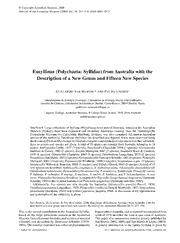
Eusyllinae (Polychaeta: Syllidae) from Australia with the description of a new genus and fifteen new species
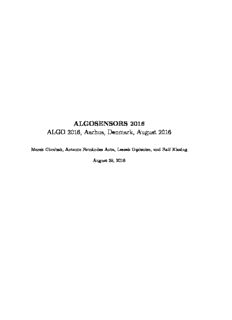
ALGOSENSORS 2016 ALGO 2016, Aarhus, Denmark, August 2016
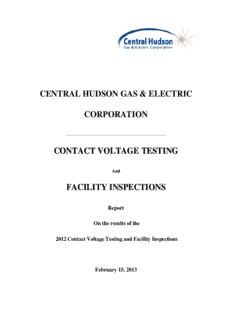
central hudson gas & electric corporation contact voltage testing
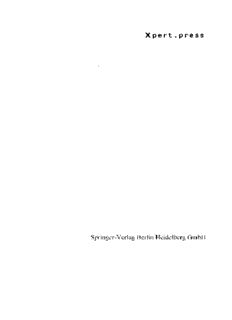
C++ mit dem Borland C++Builder: Einführung in den ANSI/ISO-Standard und die objektorientierte Windows-Programmierung
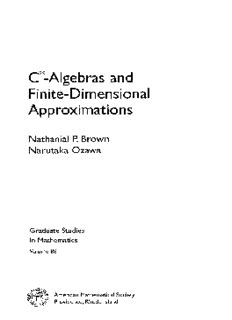
C*-Algebras and Finite-Dimensional Approximations
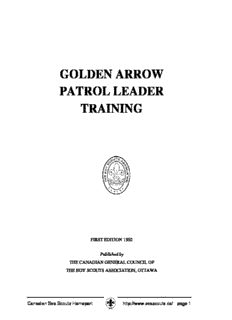
Golden Arrow Training Handbook

Great-winged Petrel Pterodroma macroptera in Brazil
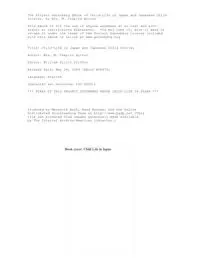
Childlife In Japan And Japanese Child Stories by Mrs M Chaplin Ayrton
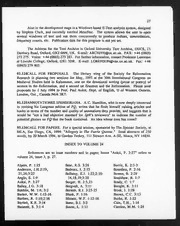
Spenser Newsletter 1993: Vol 24 Index
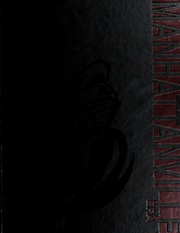
Manhattanville College Tower Yearbook

Conversations with the Great Moviemakers of Hollywood's Golden Age: At the American Film Institute
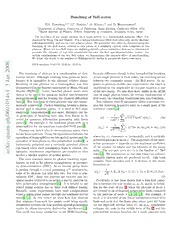
Bunching of Bell states
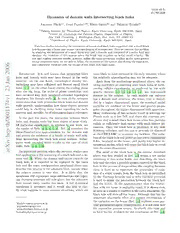
Dynamics of domain walls intersecting black holes
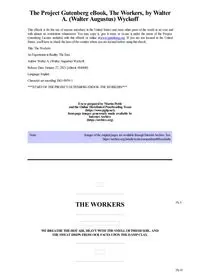
The Workers by Walter A Walter Augustus Wyckoff
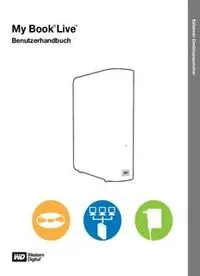
My Book Live - Western Digital
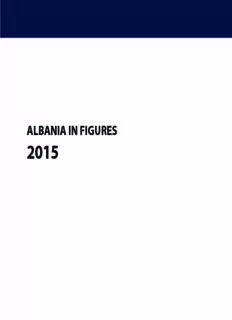
albania in figures
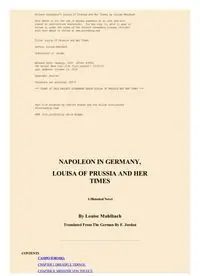
Napoleon in Germany by Louise Muhlbach
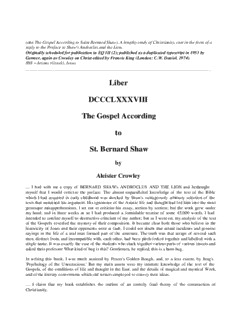
Liber DCCCLXXXVIII The Gospel According to St. Bernard Shaw

Los buscadores de oro
